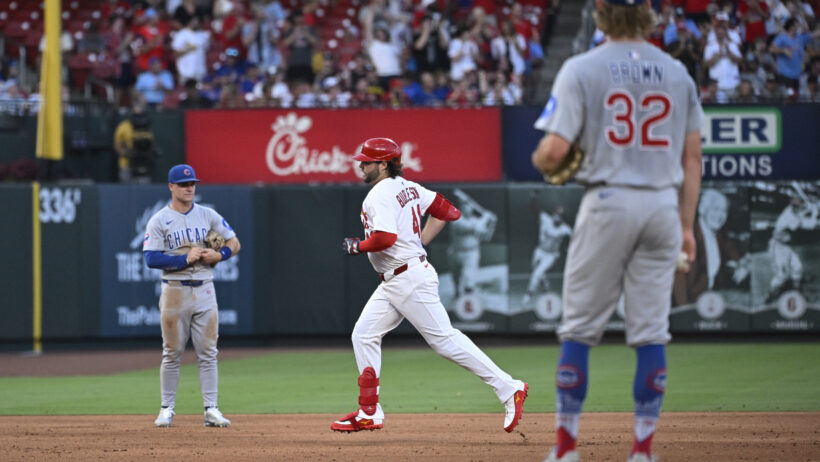How to Calculate FIP to Place Better Baseball Bets

What is FIP? How can we use it to better inform our baseball bets and improve our long-term profitability?
Baseball offers a wealth of information that can aid a bettor’s choices. You’re likely familiar with traditional statistics like errors and RBIs. But advanced analytics, or sabermetrics as these so-called fancy stats are also known, can prove more effective when handicapping MLB games.
This is where FIP – Fielding Independent Pitching – comes into the reckoning. FIP is an advanced pitching analytic that attempts to isolate and measure a pitcher’s defensive contributions.
Voros McCracken created FIP to separate the factors in a game that a pitcher can control from the factors that are out of his control. When it comes to betting, FIP helps you forecast each pitcher’s likely future performances. It’s also helpful in identifying pitchers who are likely overvalued by more traditional measures.
Jump to:
- What Is FIP in Baseball?
- How to Calculate FIP
- FIP vs ERA
- Field Independent Pitching for Sports Betting
- FIP as an Under Bettor’s Tool
- Instances to Avoid FIP
- Find More Baseball Betting Advice
What Is FIP in Baseball?
FIP focuses only on events that are in the realm of a pitcher’s control. These include strikeouts, unintentional walks, hit -by-pitches, and home runs. When calculating FIP, the results of balls hit into the field of play are completely removed from the equation. Hence the name, Fielding Independent Pitching.
Pitchers who tend to surrender more balls in play while on the mound will generally post a FIP greater than their earned run average (ERA). The removal of balls in play from the FIP equation is based on the belief that a pitcher has little control over the outcome of ensuing plays. That is, unless he happens to field the ball himself.
How to Calculate FIP
The fielding independent pitching formula is as follows:
((HR x 13) + (3 x (BB + HBP)) – (2 x K)) / IP + FIP constant
In this eqation, the FIP constant is calculated from the overall earned-run average (ERA) and overall FIP of the entire league. The FIP constant will always be the same number for every pitcher.
FIP vs ERA
FIP and ERA numbers usually appear similar at a surface level. Most pitchers have very little variance between the two numbers.
For example, Hall of Famer and four-time Cy Young Award winner Greg Maddux posted a career ERA of 3.16 and a career FIP of 3.26. Among active hurlers, Justin Verlander shows a career ERA of 3.31 and a career FIP of 3.44.
Such is the case with approximately three-quarters of big-league pitchers who’ve pitched at least 1,000 innings. Expect their FIP and ERA to be within 0.20 of each other.
When it comes to assessing pitchers, general FIP and ERA numbers can be compared similarly. Those with a FIP of 5.00 or more are considered poor pitchers. A FIP of 4.00 equates to an average pitcher. Those mound men who post a FIP around 3.00 are considered above average. Any pitcher who can dip their FIP below 3.00 qualifies as an elite Cy Young Award contender.
Despite these surface-level similarities, FIP is a much more predictive indicator of a pitcher’s true value than ERA.
Field Independent Pitching for Sports Betting
Beginners who are looking for basic strategies to bet on baseball likely aren’t dipping too deep into FIP. But for those in search of more advanced baseball betting tips, it can be a big help.
Pitchers whose ERA is much lower than their FIP are likely due for a correction. If a pitcher’s ERA is 2.35 but their FIP is 3.58, it’s likely that their ERA value is heavily influenced by the strong fielding performances of their teammates.
But relying on your team’s fielding ability alone is not a viable defensive strategy over the long run. Eventually, those balls will start falling in. Opponents will begin to hit better against the pitcher with runners on base. Looking for pitchers with low ERA and higher FIP can help you identify the players and teams most likely to eventually suffer this fate. Bet against pitchers with such a record.
At the other end of the scale, suppose there’s a pitcher with a 4.48 ERA but a 3.68 FIP. In this example, the pitcher is outperforming his team. This is due for a positive correction. Eventually, his ERA will come down closer to his FIP. When this guy takes the mound, you’ll want to bet with him.
FIP as an Under Bettor’s Tool
Pitchers who post a high ERA but a low FIP are always going to be solid under bets on a game’s total. As we know, a low FIP value suggests the pitcher is likely to post a strong performance and allow relatively few runs compared to an average pitcher.
But sportsbooks who look at ERA to set the total will put the over above what it should actually be. You can ride this pitcher as a safe under proposal until his ERA adjusts and he’s no longer being offered at such long odds.
FIP is also a useful indicator when it comes to wagering on underdogs. Betting a pitcher with a low FIP who’s taking the mound for a weaker team is a wager that should garner the bettor a price. This will especially hold true if he’s facing a top team.
Instances to Avoid FIP
FIP is flawed in its punishment of pitchers who aren’t power pitchers. Some of the most effective pitchers don’t strike out a lot of batters. Instead, they tend to throw pitches that result in weak hits easily fielded for an out. Because such plays require the assistance of a fielder, they don’t benefit the pitcher’s FIP rating despite their clear defensive value.
- BETMGM SPORTSBOOK
USE CODE SBD1500 & GET $1,500 BACK IN BONUS BETS
- BET365 SPORTSBOOK
BET $5 & GET $150 IN BONUS BETS WITH CODE DIME365
- FANATICS SPORTSBOOK
BET & GET UP TO $1,000 IN BONUS BETS!
- DRAFTKINGS SPORTSBOOK
BET $5 & GET $150 IN BONUS BETS INSTANTLY!
- FANDUEL SPORTSBOOK
BET $5 & GET $150 IF YOUR BET WINS
- CAESARS SPORTSBOOK
USE CODE SBD2DYW & BET $1 TO DOUBLE THE WINNINGS ON YOUR FIRST 10 BETS!
Must be 21+. GAMBLING PROBLEM? Call 1-800-GAMBLER (CO, IL, KS, KY, MD, MI, NC, NJ, OH, PA, TN, VA, VT, WV, WY); (800) 327-5050 or gamblinghelplinema.org (MA); (877) 8-HOPENY (NY); 1-800-NEXT-STEP (AZ); (888) 789-7777 (CT); 1-800-BETS-OFF (IA); 1-800-9-WITH-IT (IN); mdgamblinghelp.org (MD); morethanagame.nc.gov (NC); 1800gambler.net (WV)
Find More Baseball Betting Advice
Ultimately, in the vast majority of cases, FIP is a useful tool that offers a true picture of how a pitcher is performing. Pay attention and it can lead to successful baseball betting.
But FIP is just one of many metrics and strategies you can use to improve your return on investment when wagering on baseball. Check out the rest of the baseball articles in our how to bet on sports section to learn more.

Evergreen Writer/Editor; Sportsbook Expert
With nearly two decades of experience in sports media, Paul Costanzo turned his professional attention to sports betting and online gambling in January of 2022. He's covered every angle of the industry since then, managing and creating content for PlayMichigan and The Sporting News, and now SBD.




